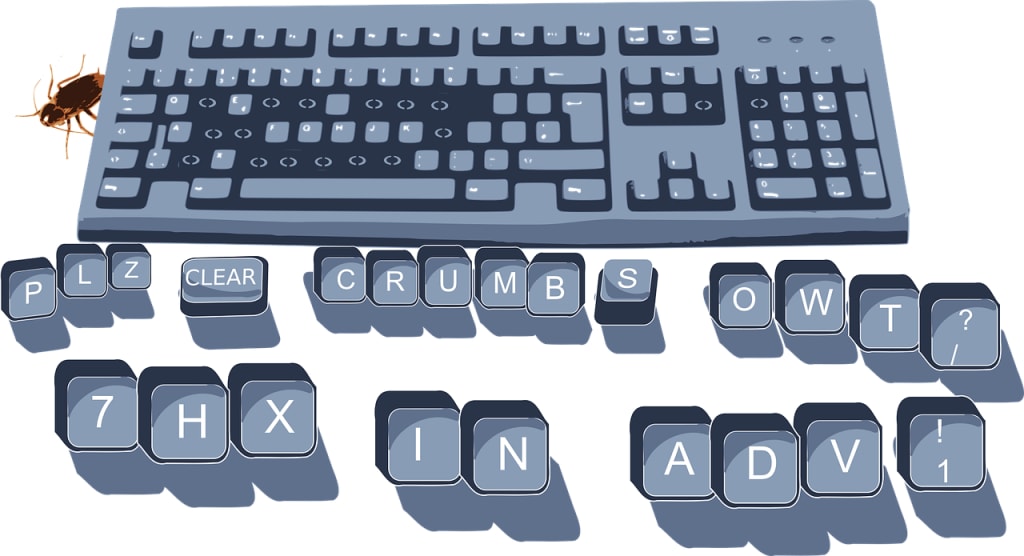Cockroaches staying power
They just don't die!

The Egyptian Book of the Dead contains a banishing spell that commands, "Be far from me, O vile cockroach. We're still battling these insects more than 3,000 years later. Cockroaches, however, seem to withstand nearly everything we throw at them, including poison traps and hastily brandished slippers. There are nearly 5,000 species of cockroaches, which is why they are so challenging to eradicate. The majority of them (99%) occupy a variety of habitats where they contribute significantly to the ecology by recycling dead or decomposing organic matter and feeding other animals. A small number of species, however, have adapted to coexist with people. One of the most prevalent species is the German and American cockroach. Additionally, a combination of their physical and chemical adaptations are what give them their resilience. They're surprisingly tenacious when it comes to traditional removal techniques.
The sensory hairs or structures of an American cockroach pick up minute air currents and quickly transmit signals to their nervous system. Within a few milliseconds, the roach can turn and run away. It is also one of the fastest invertebrate species ever observed, with top speeds of 50 body lengths per second. This is comparable to running more than 300 kph in terms of speed for humans. Furthermore, it's simple to locate a hiding place. An American cockroach can fit into spaces that are only a quarter of its height thanks to its flattened, flexible body. It can withstand compressive forces of up to 900 times its own weight even if we do manage to hit it by dispersing the force along its body. The cockroach is even more resilient than that, though. The variety of organic materials that cockroaches can consume includes hair, dead skin, adhesives, and paper. A wide variety of digestive enzymes enable this. Even in environments with low levels of nutrients, cockroaches can survive and even thrive. Roaches frequently consume decaying foods that are low in nitrogen, a substance that is necessary for the formation of DNA and proteins. However, they survive by storing nitrogen-containing waste in their bodies and having a local bacterial population recycle the nitrogen into helpful molecules for them. German cockroaches, meanwhile, have no qualms about consuming their own excrement, vomit, or the bodies of dead or dying colony members. An American cockroach will play in the sewers, eating waste and carrying bacteria like Staphylococcus aureus and E.coli.
They will, however, almost never face any repercussions. This is because they possess genes that confer immunity against a variety of pathogens. These genes frequently undergo extensive duplication. The immune system of the cockroach effectively releases numerous antimicrobial molecules as a result of infection. In addition, cockroaches have a variety of pesticide defenses. For instance, it's likely to be fatal if a non-resistant roach steps on a surface where pyrethroid insecticide has been sprayed. After being absorbed, the chemical binds to sodium channel proteins, which aid in the transmission of nerve impulses. Because the sodium channels are kept open by the pyrethroid, the nerves fire frequently. The cockroach eventually passes away. However, a roach that has developed a resistance to pyrethroids will do just fine. Due to genetic mutations, they now have sodium channels that the pyrethroids are unable to bind to. Additionally, the cockroach makes more detoxification enzymes, which render the pesticide harmless and allow the cockroach to simply excrete it as waste. German cockroaches reproduce particularly quickly, so populations may develop resistance to a new pesticide within months. They already exhibit resistance to 43 different chemicals.
However, cockroaches probably wouldn't survive a nuclear holocaust, despite what the general public thinks. Cockroaches are not very radiation tolerant when compared to other insects. Near nuclear explosions, they would perish, but miles away, they would still be severely compromised. In addition, catastrophes that endanger humans also endanger the roaches' habitats and food sources. Maybe the only way to defeat them is by destroying each other. Perhaps cockroaches would develop even more inventive strategies to survive long after we are gone.
About the Creator
Enjoyed the story? Support the Creator.
Subscribe for free to receive all their stories in your feed. You could also pledge your support or give them a one-off tip, letting them know you appreciate their work.






Comments
There are no comments for this story
Be the first to respond and start the conversation.